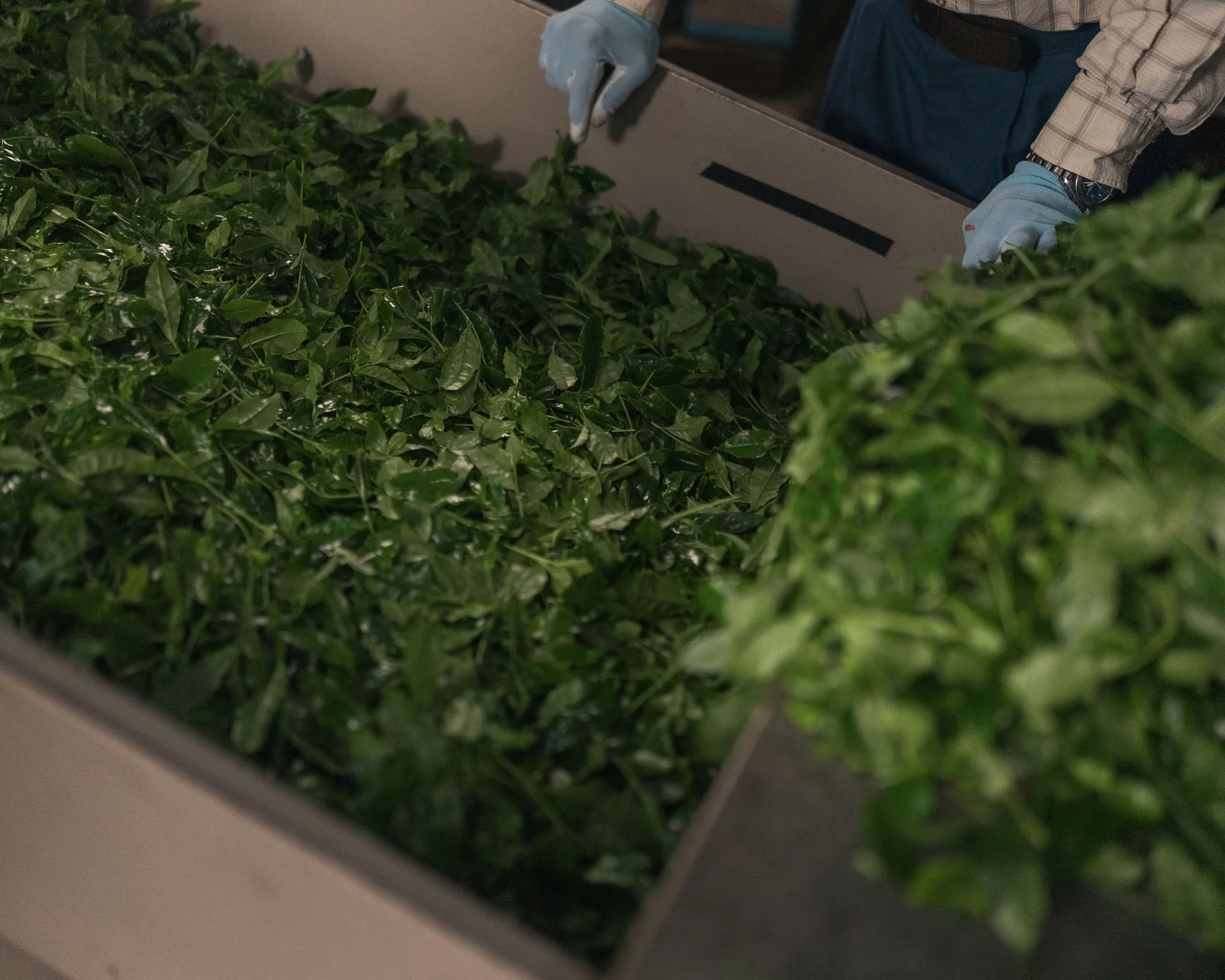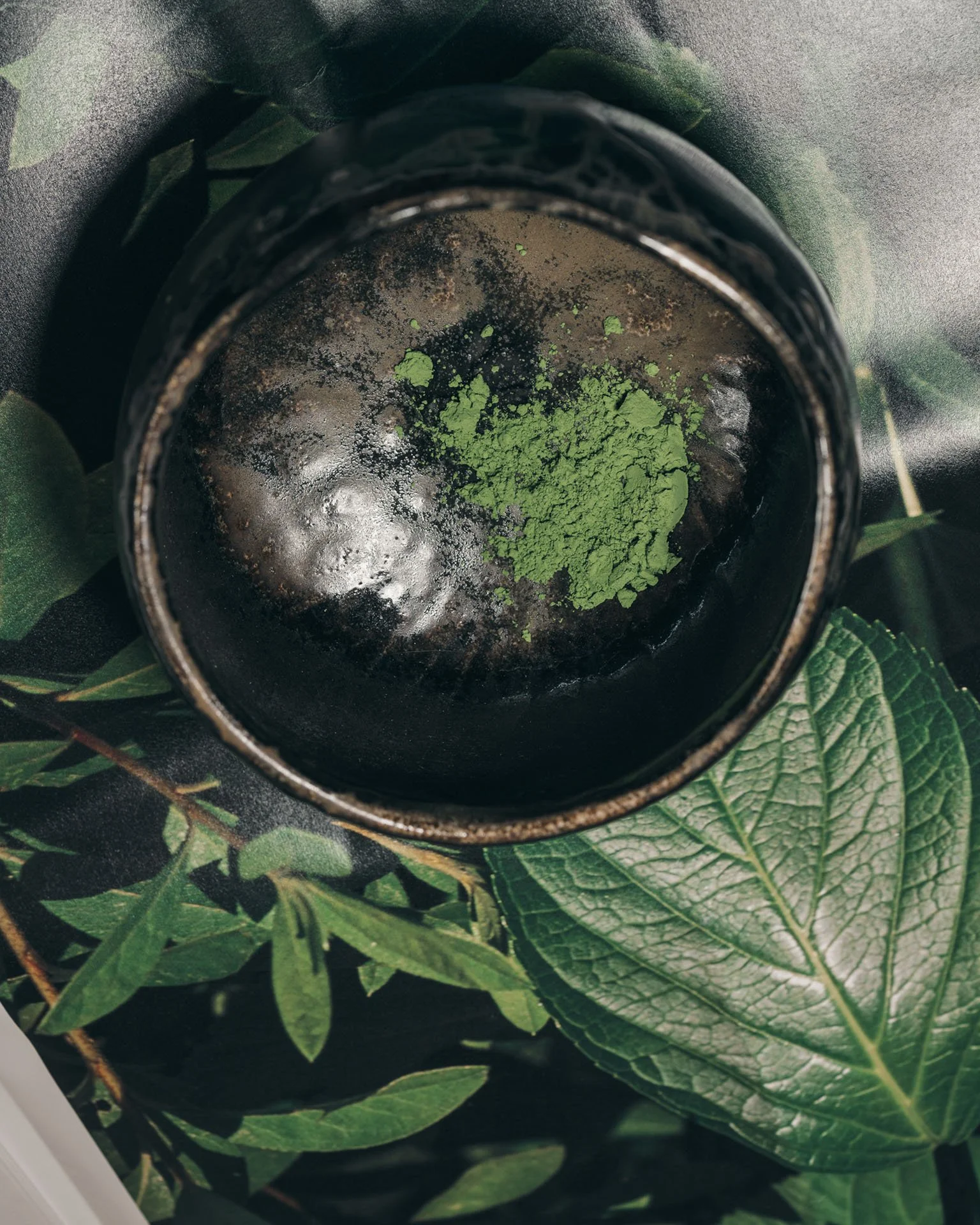We’re All wrong about the Matcha Shortage (and what to do about it)
Matcha Nōto (抹茶ノート) is Ooika's monthly newsletter. Join here free to learn more behind-the-scenes about fresh-ground Matcha.
What we got wrong about the Matcha Shortage
The global Matcha Shortage has made authentic Matcha difficult to find. It’s not just Western buyers that are affected, but even Japanese tea ceremony schools (known as Chanoyu) that are competing for what Matcha hits the shelves.
This is mostly common knowledge – Matcha is hard to find. But if you’re clever you may have noticed something contradictory:
If the Matcha harvest only happens once or twice a year, how can it “sell out” then “restock” over and over, through the entire year? Don’t we run out of tea leaves?
Skip the Details One of the largest drivers of the shortage isn't just a lack of tea leaves (tencha) but the production capability to mill it into Matcha using stone mills. By purchasing from companies like Ooika that mill in the United States, we help relieve the Japanese tea industry from the burden of milling. This makes sure more Matcha is available to Japanese consumers and Japanese tea schools.
It’s not exactly shortage of Tencha
Here’s where you might be shocked: the “matcha shortage” is only partly caused by a shortage of Tencha (the unground leaves ground into Matcha.) Instead, it’s caused by a shortage of Matcha. This is a highly important distinction.
The MATCHA Boom
What we call the “Matcha Shortage” in the West is called the “Matcha Boom” in Japan. And there’s a big reason for this:
Tea Farmers, especially those who grow high-volume, lower-quality material, are pulling in astronomically high returns on their tea this year at auction. Starting at 1.7X the price from last year, and sometimes up to 5X+. It’s a boom. Money is flowing.
Increased Prices
Now it is true that there is a lower yield of Tencha this harvest. In fact, the 2025 harvest had a 20% lower yield than the 2024 harvest according to Marukyu Koyamaen.
This lower yield and high auction prices mean there’s less of a pie to go around, and the slices that do are more expensive; thus, certain companies that have less bidding power have less Tencha - and thus less material on shelves.
However: we need to go deeper. This shortage of Tencha primarily translates to high prices of what is on the shelves, rather than less material being available on the shelves.
It’s not really a shortage of Tencha that’s causing problems (that’s causing price increases), but a lack of Matcha.
Matcha, not Tencha
What we’re seeing with this Matcha shortage isn’t only high prices but not enough product to sell. It turns out that the main driver of the shortage is stone milling.
This is why suppliers sell out of fine Matcha, but there’s no shortage of Matcha Kit-Kats, Matcha Ice-Cream and other low quality material that doesn’t require stone milling.
The Bottleneck
Many Japanese producers have the Tencha, but simply can not mill it fast enough to meet demand. This is why producers restock and sell out in cycles, despite them having already purchased the Tencha stock for the entire year.
Tea Ceremony schools are struggling to get Matcha because the fine Matcha required needs to be stone-milled. The West also prefers stone-milled Matcha, and it’s easy to understand why: stone-milled Matcha tastes better and is smoother. Even in formats like Matcha Lattes.
Remember that stone mills only produce about 30 grams of matcha per hour, creating this bottleneck. In fact, Uji Matcha manufacturers have announced that there are “limited sales to the general public in order to prioritize supply to its long-time customers such as tea ceremony practitioners and shrine affiliates.”
Matcha refineries in Japan are investing in more stone millse, but producing the mills is a slow process itself. If you’re in the West, there is a solution to this problem: you can have your cake and eat it too:
Contribute to the Solution, not the Problem
Prices will continue to rise for Matcha, and there’s not too much we can do about that. And truthfully, there’s a strong argument that prices should rise for the health of the Japanese tea industry.
But it’s possible to get stone-milled Matcha in the United States in an ethical way that does not take material away from the Japanese tea schools or, in general, contribute to the shortage. And that’s by purchasing Matcha that’s stone-milled in the United States.
AI Statement No AI was used in the creation of this content. All Ooika articles, content, emails and more are written and reviewed by real people.
The solution, not the problem
Ooika mills 100% of the Matcha we sell in-house, from reputable farmers in Japan we hold personal relationships. While some Western companies are selling out, waiting in queues for Japanese refineries to mill their orders, Ooika frees up room in the line. This means that, in some small part, buying local helps contribute to the solution, not the problem, of the Matcha shortage.
You can visit our shop here to buy the best Matcha in the United States, ground fresh. Ooika also has membership in our Matcha Mill Club, where we mill a new single-origin Matcha and ship it out to you within 24 hours of milling. This is a great way to learn about Matcha and experience tea from some of Japan’s most prized producers.







Learn what’s happening in the world of Japanese Matcha with Ooika’s Matcha Industry Report from October 2025.